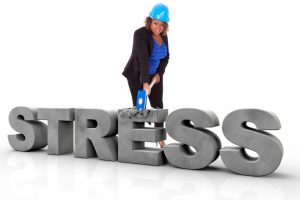PTSD or Post Traumatic Stress Syndrome is a serious condition where trauma is never processed. In previous blogs, we have discussed its causes and symptoms. In all cases, the memory is fragmented and unable to process due to its extreme nature. When it is unable to become processed, it continues to haunt the individual through flashbacks, dreams, arousals, disassocation and emotional instability which leads to a variety of personal issues
Once known as Shell Shock from WWI, the horrid event is so traumatic, that those who experience PTSD are unable to come to grips with the magnitude of the event or loss. This leads to multiple symptoms. It is important to help treat people and guide them who experience PTSD from war, crime, or traumatic loss beyond one’s control. Healing and treatment are a long road but there are first steps that can be taken as well as strategies to help manage symptoms. These strategies can help someone cope till the fragmented memories are properly stored and allow the person to function without the adverse effects of PTSD.

Healing begins when the person starts to apply skills to manage the ongoing symptoms and traumatic memory is slowly integrated. Integration takes time and requires special therapies with a licensed specialist who can help someone process, assimilate and reframe the trauma. In addition to utilizing skills to manage symptoms, the individual must confront the feelings and harmful coping behaviors such as drugs. Others need to be willing to give up the secondary gains of their condition. Some may earn government pay, others may feel the sympathy and pity of others would be lost if they sought help. One needs to be able to give up these additional gains to become healthy and on one’s own.
One needs to also establish safe boundaries. Only in a spot correlated with safety can someone with PTSD begin healing. Someone who was raped may have a difficult time finding a safe boundary. Establishing this is key as one faces the trauma.
Ultimately what is preventing treatment? Is there a fear that treatment is a sign of weakness, especially if a soldier? Is there a fear of discovery of the source of the pain? Some may fear opening up to a therapist or anyone. Others fear they may also lose the good memories with the bad. Ultimately, a therapist can help guide the PTSD patient through the maze of feelings.
In addition, once an individual has learned to manage basic arousals, flashbacks or potentially dangerous outbursts, one may consider a support group. Support groups have multiple benefits for PTSD victims. The group and its autonomy grants a sense of control that one and one therapy sometime lacks. It aids against alienation, provides security and a mutual acceptance beyond any preconceived stigma. There secrets can be revealed, progress made and coping ideas shared. Friendships can also blossom from the mutual pain and stories.
Many strategies during the healing process can be done alone and do not require professional treatment. Professional treatment in aiding integration are still extremely important but learning to manage basic arousal, flashbacks and trauma are key in learning to retake one’s life.
Affect Management looks at controlling one’s own emotions by personally facing them. In it, one names the feeling and recognizes and feels them without judgement. The feelings are to be felt but also understood. They are not to be deemed good or bad but experienced. The feelings are to be seen as normal, but also in analysis constructive to understanding. Feelings make sense if we hear them and try to better understand what they are trying to tell us. Control of feelings is key as well. Anger Management and its many useful strategies are key in understanding why one is angry and how to better utilize it in a constructive way. Many individuals with PTSD are angry over what happened. They may seek revenge, or they may feel misunderstood or jealous of others who are not victimized. Anger at the world, the perpetrator or anything is very common. This anger needs managed but it also needs to be allowed to vent in a healthy way and be heard in a constructive way.
When certain triggers cause arousal it is also important to learn to cope with these issues. Breathing Retaining is a way to control one’s breath and avoid hyperventilating which is common during arousal and extreme anxiety caused by PTSD. Other forms of relaxation and meditation can also be useful to manage arousal symptoms. Progressive Muscle Relaxation is an excellent tool in gradually relaxing all muscles through contracting and relaxing muscles from head to toe. Autogenic Training is also a mind body connection similar to self hypnosis that looks to calm the mind. Another successful tool is eye movement. Eye movement works by visualizing the trauma and not allowing to exceed an anxiety ranking about the SUD scale of 5 which is irritating but bearable. After this is reached, one focuses on two objects and switches back and forth, moving the eyes slowly. For many, 2/3rds to be precise, feel some type of relaxation after this procedure is experienced multiple times.

In regards to flashbacks, many also utilize eye movement, but grounding is an equally effective method. Grounding involves one touching something in the present, whether the arm of a chair or the soft touch of a carpet on one’s feet. Stomping one’s feet, or even naming things in one’s surrounding can help one ground oneself in the present. Another way to combat flashbacks is through safe place imagery. Safe place imagery is a pre-arranged place one can go. It first requires one to select an image that confirms safety and focusing on it and the feelings. One should then find this safe place in their mind. Another mental option is split screen, which one mentally portrays within one’s mind. In it, one screen is the past and the other screen is the present. Realizing that the past is the past can sometimes let one focus on the present screen. Finally, a feeling dial imagery can also help some. In it, one imagines a radio or numerical dial in which they visualize lowering from ten to one in regards to how they feel.
These are just coping strategies and it will take a far more deeper treatment plan to eventually help one with PTSD but these coping strategies open the door and help the person begin the long process to complete integration of trauma material into the long term memory. They are useful in allowing the person to enter into society, face fears and find the healthy outcome they wish.
Ultimately, healing and treatment will lead to less intrusive thoughts, flashbacks, dreams and distressful associations. It will help individuals remember without detachment. It will help one to recall feelings without arousal and detachment. It will aid with anxiety, sexual discomfort and depression, as well with isolation from the company of others. Ultimately, treatment will help one integrate the loss, reframe it and move forward into the future. In future blogs we will review common treatments for PTSD
Please also review AIHCP’s Stress Management Program and see if it meets your academic and professional goals. The program is online and independent study and open to qualified professionals seeking a four year certification in Stress Management.
Related source: The Post Traumatic Stress Disorder SourceBook by Glenn Schiraldi, PhD










